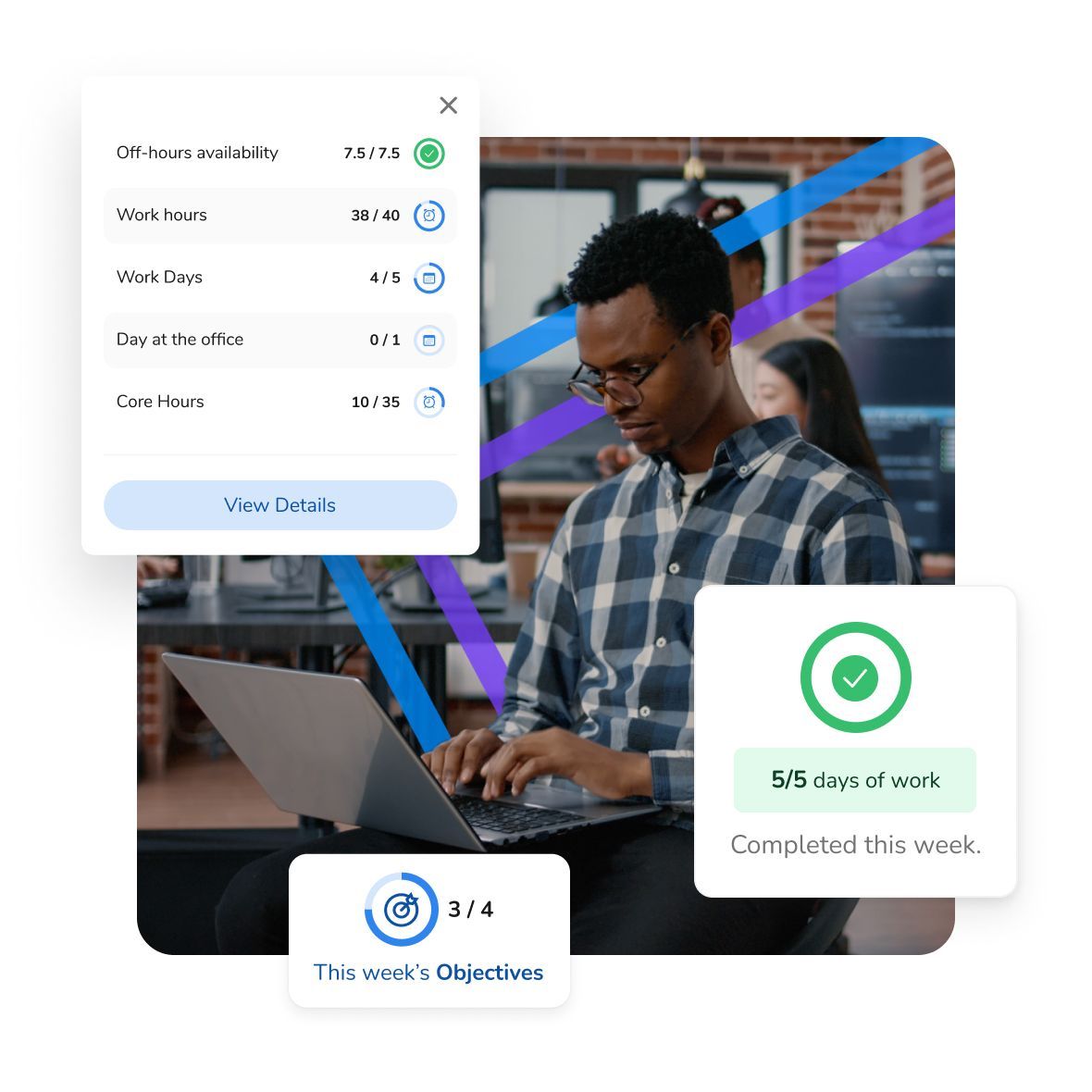Navigating the Hybrid Workplace: The Vital Role of Guardrails and Policies
The advent of the hybrid workplace, where employees work both in-office and remotely, has become the new normal. This paradigm shift brings about numerous benefits, such as increased flexibility and improved work-life balance. However, it also presents new challenges that organizations must address. One crucial aspect of managing this dynamic environment is the establishment of workplace guardrails and policies tailored to the unique demands of the hybrid workplace.

Balancing Flexibility and Accountability
The hybrid workplace represents a delicate balancing act between flexibility and accountability. Employees now have the freedom to choose where they work, but this newfound autonomy necessitates a framework of guidelines to maintain productivity, security, and a healthy work culture. Workplace guardrails play a pivotal role in achieving this equilibrium.
1 Defining Expectations:
A survey conducted by Gallup revealed that 54% of remote workers believe it's crucial to have clear expectations set by their managers. Clear communication of expectations is vital in a hybrid workplace. Employees should be aware of their responsibilities, deadlines, and performance metrics, regardless of where they are working from. A well-defined set of policies helps in setting these expectations, ensuring that everyone is on the same page.
2 Security and Data Protection:
According to a report by IBM, the average cost of a data breach is $3.86 million. With a dispersed workforce, safeguarding sensitive information becomes even more critical. Policies regarding data security, encryption, and secure network access are essential in preventing data breaches and ensuring compliance with privacy regulations.
3 Maintaining Work-Life Balance:
The Harvard Business Review highlights that remote workers are at risk of working longer hours than their in-office counterparts. The hybrid model offers the promise of a better work-life balance, but it also presents the risk of overworking or burnout due to blurred boundaries. Guardrails should include guidelines on setting boundaries, managing workload, and promoting self-care.
4 Technological Infrastructure:
A survey by TechRepublic found that 78% of remote workers report experiencing technology-related issues. A hybrid workplace relies heavily on technology. Policies should address the provision of necessary tools, troubleshooting procedures, and the expectations regarding the use of personal devices for work purposes. This ensures that employees have the necessary resources to perform their tasks effectively.
5 Inclusivity and Accessibility:
The hybrid model can potentially create a divide between in-office and remote workers. A study by Slack found that 82% of employees believe it's important to maintain a sense of belonging and inclusion in a remote work environment. Policies should emphasize inclusivity, ensuring that all employees have equal access to opportunities, meetings, and resources, regardless of their physical location.
6 Performance Assessment:
Evaluating employee performance can be challenging in a hybrid setting. A report by SHRM emphasizes the importance of setting clear performance metrics. Clear guidelines on how performance will be assessed, including the metrics used and the frequency of feedback, are crucial for maintaining fairness and transparency.
7 Fostering a Culture of Trust and Collaboration
Guardrails and policies in a hybrid workplace should not only focus on setting boundaries but also on nurturing a culture of trust, collaboration, and innovation. When employees feel supported and empowered, they are more likely to contribute meaningfully to the organization's success.
8 Open Communication Channels:
According to a survey by Edelman, 63% of employees believe that CEOs should communicate information on significant changes in the company's operations. Policies should encourage open lines of communication, providing avenues for employees to seek guidance, share ideas, and report concerns. Regular team meetings, virtual hangouts, and accessible leadership are vital components of this communication strategy.
9 Training and Development:
A study by LinkedIn found that 94% of employees would stay at a company longer if it invested in their career development. Ongoing training and development opportunities should be outlined in policies to ensure that employees have the resources they need to adapt to evolving technologies and work practices. This not only benefits the individual but also contributes to the organization's overall growth.
10 Feedback Mechanisms:
Constructive feedback is crucial for personal and professional growth. A study published in the Harvard Business Review emphasized that regular feedback can lead to higher performance. Policies should establish clear channels for giving and receiving feedback, promoting a culture of continuous improvement and learning.
The hybrid workplace represents a paradigm shift in the way we work, offering unprecedented flexibility and opportunities for innovation. However, to harness its full potential, organizations must implement robust guardrails and policies that balance flexibility with accountability. These policies not only provide a framework for productivity and security but also foster a culture of trust, collaboration, and growth. By investing in these critical components, organizations can navigate the complexities of the hybrid workplace and thrive in the evolving world of work.
